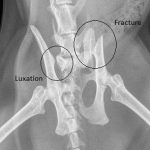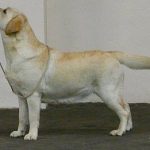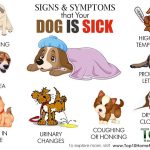
We dispel myths cz. 3) Cereals in dog food
In recent years, a new trend has emerged with regard to how dogs are fed, the so-called. grain-free foods. The concept of not using grains in dog nutrition stems from the belief that the dog’s wild ancestor did not eat wheat, corn or rice, and therefore adding these ingredients to the dog’s diet is unnatural. This in turn is related to the second belief that naturalness is better. This is how most dog guardians encounter negative comments about cereals. There are a huge number of opinions circulating that even scare the consequences of eating cereals and categorically warn against it. Is the claim of negative effects of cereals on dog health really true and supported by scientific evidence, or is it just „urban legend”? And are grain-free foods really better and more „natural” for dogs? Breaking down this problem into its fundamental factors, it seems necessary to answer three basic questions.
1) What is natural nutrition for your dog,
2) what cereals are and how they affect a dog’s body and
3) do grain-free foods really offer anything better than those that contain grain??
In the wild, canines have limited access to food, and obtaining it requires extreme effort. In the process of evolution and domestication, the living conditions of dogs have changed significantly. Furthermore, the selection that took place spontaneously in the early stages of domestication has become very intensive and purposeful over the past centuries as a result of breeding. The current dog differs from the wolf in the expression of many genes, including those responsible for digestive processes. What is natural food for a wolf is not necessarily natural food for a domestic dog. In addition, the role of nutrition is no longer just to satisfy the primary need for survival and extension of the species. Today we expect much more from nutrition. Optimal nutrition is supposed to promote health throughout the life (much longer than in nature) of the animal in conditions far from natural (concerns physical activity, environment, psychological, genetic burdens, etc.).).
Looking from the point of view of the science of dog nutrition, the most important issue is the completeness and balance of the food, so that the animal receives all the necessary nutrients in the right amounts and proportions, since both excess and deficiency of nutrients carry the risk of adverse health consequences. This also applies to food energy. Each component of the diet provides a specific „kit table” nutritional substances, and the proper selection of raw materials determines the satisfaction of all nutritional needs of dogs. So the most important thing is the nutrient content and the ratio of nutrients to energy in the food. From this perspective, it makes no difference whether a food contains cereals or not.
What are cereals? In terms of nutritional and energy value, the most valuable raw materials are: wheat, rye, triticale, barley, oats, corn, millet and buckwheat. The differences in cereal composition relate to the proportion of essential nutrients. Cereals contain both simple sugars (e.g. glucose, fructose, xylose etc.), as well as complex sugars and polysaccharides (e.g. sucrose, maltose, starch, fiber, etc.) The most important nutritional function is performed by starch, which is a very good source of energy in food. Proper processing of starch i.e. Fragmentation, hydration and heat treatment determine its assimilability. In dogs, the digestibility of starch is very high. Experimentally feeding dogs products that contained 30 to 57% extruded corn, barley, rice, or oats showed that the nutritional efficiency of all these cereals was 100% [3]. The starch content of cereals ranges from 50-80% (dry matter). Starch can also be provided from other sources – e.g. vegetables, fruits. For example, tomatoes and beans contain approximately 70% carbohydrates (also on a dry weight basis). It will still be practically the same starch (or almost the same) and, what’s more interesting, regardless of the source, it will be contained in similar amounts. This means that it is possible to meet a dog’s nutritional requirements by feeding properly formulated grain-free diets as well as those with grains, and it is not true to say that there is any one good option or best solution for all dogs. Just like starch from cereals, starch from other sources undergoes the same changes and it is the total carbohydrate content that ultimately determines the nutritional value of the food. As of today, there is no set minimum or maximum carbohydrate content in a healthy dog’s diet, and there is no reason to believe that a complete food with fewer carbohydrates is better than one with more carbohydrates. To better understand these relationships, it is important to remember that in food, each substance has a nutritional significance and nutritional values can be delivered in different configurations. Only the supply of essential ingredients is crucial – protein, fat, vitamins and trace elements in the correct proportion to energy.
Raw materials of plant origin have been present in the diet of dogs for millennia. The most important of these are cereal seeds and their preparations, root vegetables, pulses and fruit. Raw plant sources are valuable components of the diet and provide essential nutrients such as proteins, fats (including essential fatty acids), vitamins and minerals. In some cases, plant sources may be the only source of minerals and vitamins. In addition, raw and thermally processed plant foods contain many biologically active substances that have a health-promoting effect by preventing and reducing the effects of disease. These include m.in. polyphenols, flavonoids, phytosterols or dietary fiber fractions.
Dogs have evolved to be highly reliant on plant-based foods for their m.in. a valuable source of energy and dietary fibre. Genetic studies on dogs show significant differences in the expression of genes related to starch digestion [1, 6]. Another advantage of cereals is the provision of dietary fiber, which has a positive effect on gastrointestinal health, intestinal peristalsis and stool quality. Fiber is not an essential nutrient – in the strict sense of the term – however it is recommended, because the proper functioning of the gastrointestinal tract depends largely on its content and quality. However, excessive fiber content decreases digestibility and makes dog food taste worse. So it is recommended that you do not exceed 5% total fiber in your dog’s food [5].
Therefore, a high content of complex carbohydrates in the diet of a healthy dog does not pose any risk. Often grain-free foods are incorrectly equated with low-carbohydrate diets. This type of food – high in protein and low in carbohydrates – can be used to treat animals with diabetes mellitus. However, this is not the same as a grain-free diet, in which cereals are replaced by e.g. potatoes, beans, tomatoes etc., which are also sources of carbohydrates. In some grain-free diets, carbohydrate levels are the same or even higher than in standard grain-containing foods. This also raises the question of why grain-free foods are considered more natural and compatible with feeding wild canids? If „grain-free” does not mean „low-carbohydrate”, Such conclusions are completely unjustified, as e.g. potatoes are neither more nor less „natural” for your dog than cereals. Fortunately, both sources of carbohydrates, when properly processed, are completely digestible for the dog and provide a valuable component of the diet.
Finally, it’s worth noting another lingering claim about grain-free diets, which are considered by some to be diets designed to treat pets with food allergies. Pure food allergy is relatively uncommon in dogs and accounts for between 9 and 36% of all allergies in dogs [4], with adverse food reactions alone accounting for 1-6% of all skin problems [5]. An allergic reaction is an allergy to a specific protein. Studies have shown that corn and other cereals are not the most common allergens in dogs; on the contrary, corn is one of the rarest. The most common food allergies are to beef, dairy products and poultry, as well as to lamb [2, 5]. It is therefore impossible to consider grain-free diets to be suitable for all patients with food allergies. The basis of nutrition for dogs with food allergies is the use of balanced and complete diets based on hydrolyzed protein or elimination diets.
In summary, 1) feeding your dog naturally also means feeding him carbohydrates – 2) cereals are a source of easily digestible energy in the form of starch and there is no evidence of a negative effect on a dog’s body; on the contrary, it can be said that a complete diet containing cereals has many benefits such as a lower caloric density (important for low activity animals) and a relatively lower fibre content which may make the food more palatable and digestible and 3) in the light of data and nutritional knowledge it can be said that grain-free foods offer nothing better than those that contain. It is only their usually richer composition that determines better nutritional performance, not whether they contain one or another source of carbohydrates. In light of the science, grain-free foods are a great marketing idea that appeals to the imaginations of some owners without any measurable benefit to dogs. If one wants to feed a dog a truly low-carbohydrate diet, one should switch to wet foods.
The key to feeding dogs correctly is to meet all their nutritional needs by feeding them food that contains suitably digestible ingredients selected for their individual nutrient content. So the best food is a complete and balanced food regardless of whether it contains cereals or not. It is also important to remember that the selection of food for each animal should be done individually – according to their needs and preferences, and no one type of food can be said to be ideal for all dogs.
Medicine. wet. Małgorzata Głowacka
Dr n. wet. Michał Ceregrzyn
Mars Poland
1. Axelsson, E., et al., The genomic signature of dog domestication reveals adaptation to a starch-rich diet. Nature, 2013. 495(7441): p. 360-4.
2. Carlotti, D.N., I. Remy, and C. Prost, Food Allergy In Dogs And Cats. A Review and Report of 43 Cases. Veterinary Dermatology, 1990. 1(2): p. 55-62.
3. Ceregrzyn, M., et al., Fundamentals of Dog and Cat Nutrition2013, Wrocław: Elsevier Urban&Partner.









